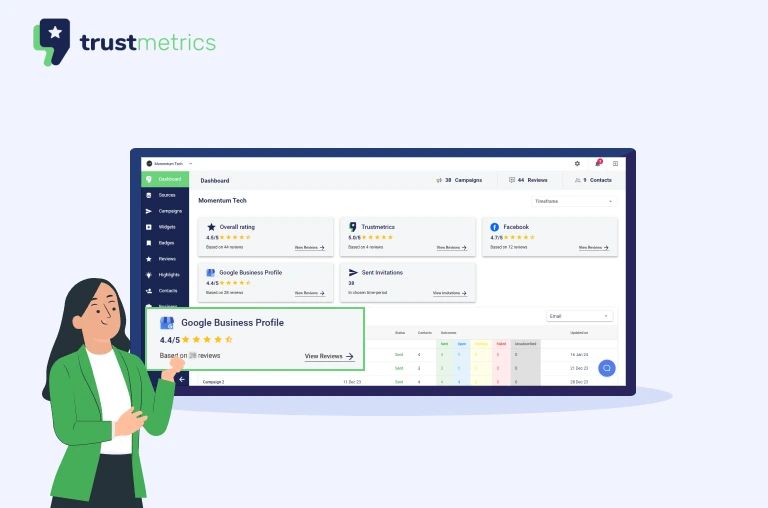Website widgets have transformed from simple add-ons to powerful conversion drivers that can make or break your online success. The choice between floating widgets and popup widgets isn’t just a design decision it’s a strategic move that directly impacts user engagement, conversion rates, and overall website performance.
The Widget Revolution is Reshaping Digital Experiences
The landscape of website widget styles has evolved dramatically, with businesses reporting up to 35% increases in conversion rates simply by optimizing their widget strategy. Whether you’re implementing a floating chat widget for websites or exploring popup widget solutions, understanding the nuances of each approach is crucial for maximizing your digital presence.
Modern consumers interact with websites differently than they did even two years ago. They expect seamless, non-intrusive experiences while still wanting access to essential information and social proof. This paradox makes selecting the right WIDGET Style more critical than ever before.
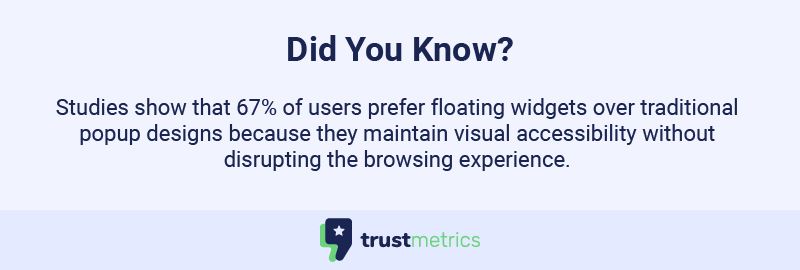
Decoding the Widget Ecosystem
Understanding Floating Widget Architecture
Floating widgets represent the pinnacle of non-intrusive design philosophy. These elements maintain a fixed position on your webpage, typically anchored to corners or edges, providing consistent visibility without blocking content. The floating chat widget for websites exemplifies this approach, offering real-time support accessibility while preserving user autonomy.
The technical implementation of floating widgets involves CSS positioning strategies that ensure cross-browser compatibility and responsive behavior. Advanced floating widgets utilize z-index layering, viewport calculations, and dynamic resizing to maintain optimal visibility across different screen sizes and devices.
Popup Widget Dynamics and User Psychology
Popup widgets leverage interruption marketing principles to capture immediate attention. These modal overlays temporarily suspend user navigation to present targeted messages, offers, or interactive elements. The psychology behind website popup design centers on creating urgency and focus, making them particularly effective for time-sensitive campaigns and conversion-critical moments.
Modern popup implementations incorporate sophisticated triggering mechanisms including exit-intent detection, scroll percentage tracking, time-based activation, and behavioral pattern recognition. These advanced features enable precise targeting that balances assertiveness with user experience considerations.
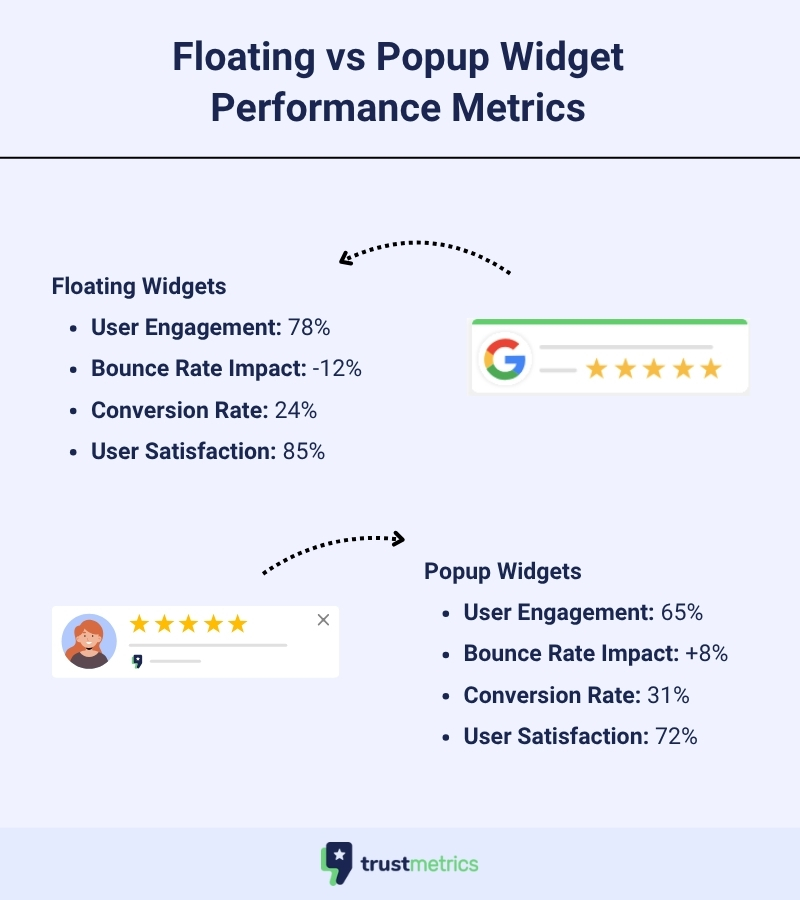
Maximizing Impact Through Strategic Widget Selection
The Conversion Optimization Matrix
Selecting the best widget for website engagement requires analyzing multiple variables including industry type, target audience behavior, content strategy, and conversion goals. Trustmetrics Reviews Widget implementations demonstrate how strategic widget placement can amplify social proof effectiveness while maintaining user experience integrity.
Different widget styles serve distinct purposes within the conversion funnel. Video Testimonial Widgets excel in building trust during consideration phases, while Google Reviews Widgets and Facebook Reviews Widgets provide credibility validation at decision points. The key lies in matching widget functionality with user journey mapping.
Advanced Widget Customization Strategies
Platform-specific customization capabilities enable precise alignment with brand identity and user preferences. Understanding how to format reviews in trustmetrics widget provides insight into the level of control modern widget platforms offer:
STEP 1: To access the platform, please open the following link in a new window: https://app.trustmetrics.me/login and proceed with the login process.
STEP 2: Navigate to the dashboard and select Widgets from the menu. Users have multiple options to select any Widget style. Here, take an example of Floating Widget:
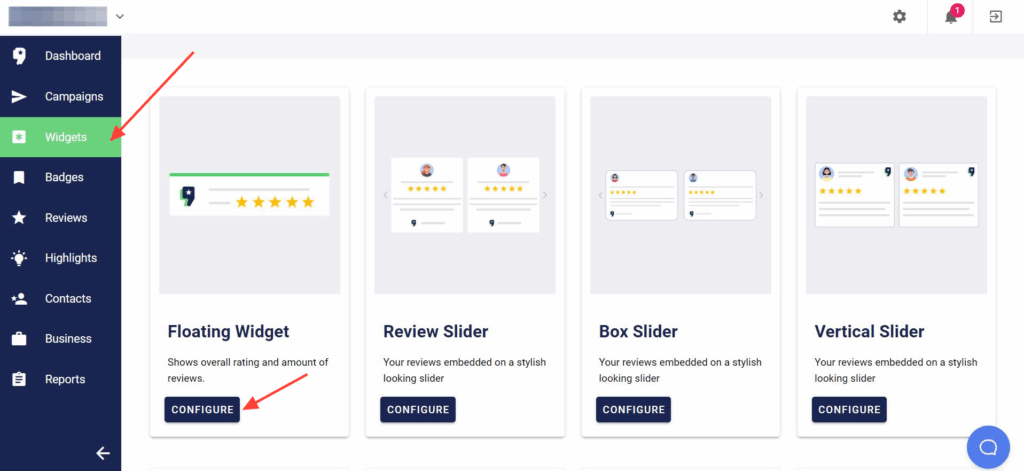
STEP 3: Select the Reviews dropdown under General settings and click the “Filter Reviews” button.
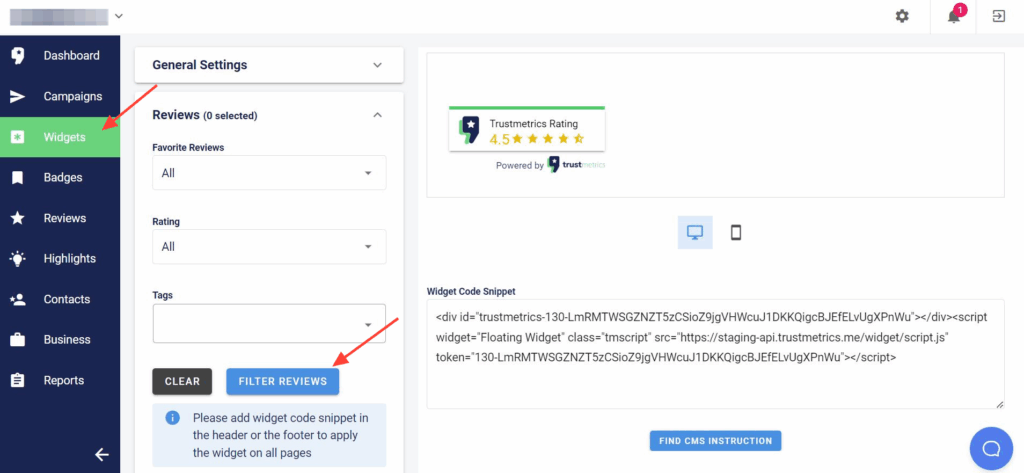
STEP 4: Users will see a “Format Review” button under the review text.
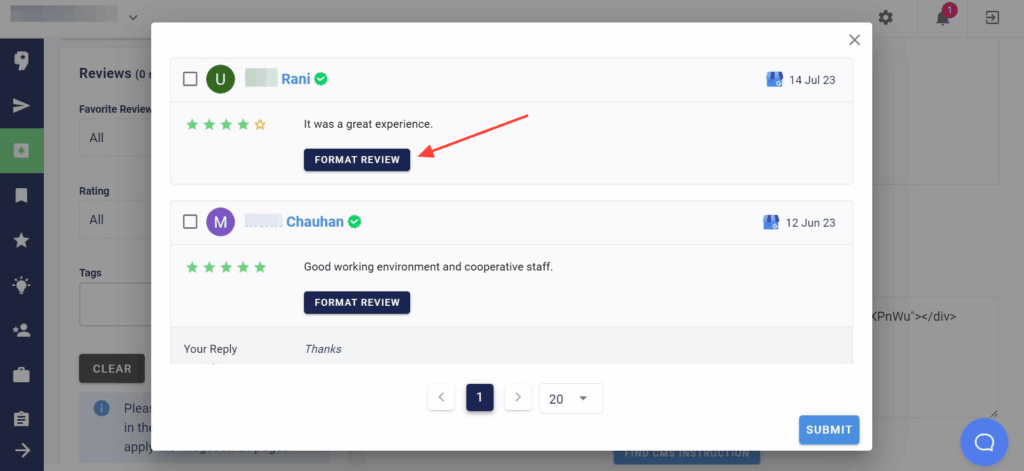
STEP 5: On Clicking the “Format Review” button, multiple edit option will appear. User can select the options as per the choice.
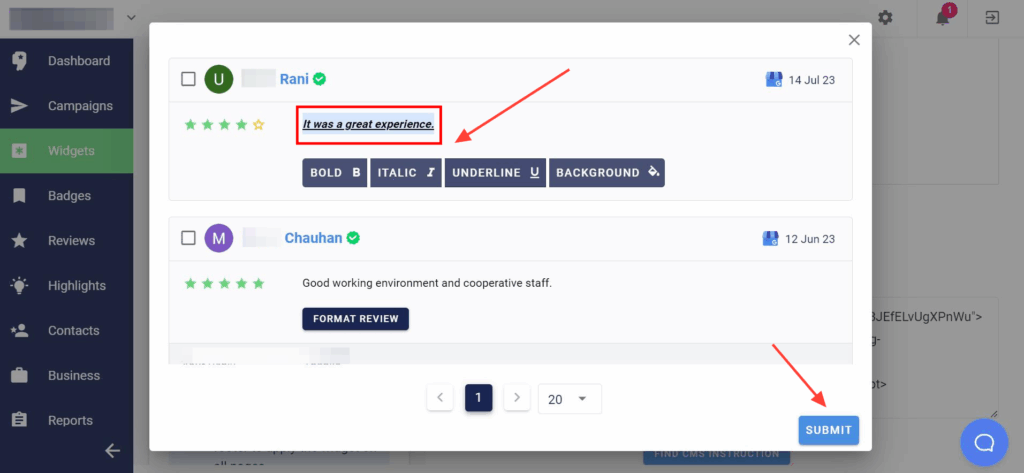
STEP 6: After formating the review text, click on the “Submit” button to Save changes.
This level of customization ensures that widget implementations align perfectly with existing design systems while maintaining functionality integrity.
Technical Implementation Considerations
How to choose the best widget style involves evaluating technical constraints including page load impact, mobile responsiveness, and integration complexity. Modern widget solutions must balance feature richness with performance optimization to avoid negatively impacting Core Web Vitals scores.
Advanced implementations incorporate lazy loading, content delivery network optimization, and progressive enhancement techniques to ensure widgets enhance rather than hinder website performance. The best popup plugins for websites demonstrate these optimization principles through efficient code architecture and minimal resource consumption.
Implementation Strategies for Maximum Impact
Strategic Widget Deployment Framework
The question of floating vs popup widget which is better doesn’t have a universal answer it depends on contextual implementation strategies. Successful widget deployment follows a systematic approach that considers user journey mapping, conversion funnel optimization, and performance impact assessment.
Increase conversions with popup widgets by implementing behavioral triggers that align with user intent signals. Exit-intent popups capture abandoning visitors, scroll-based triggers engage active readers, and time-delayed activation targets committed browsers. Each trigger type requires specific messaging strategies and design approaches to maximize effectiveness.
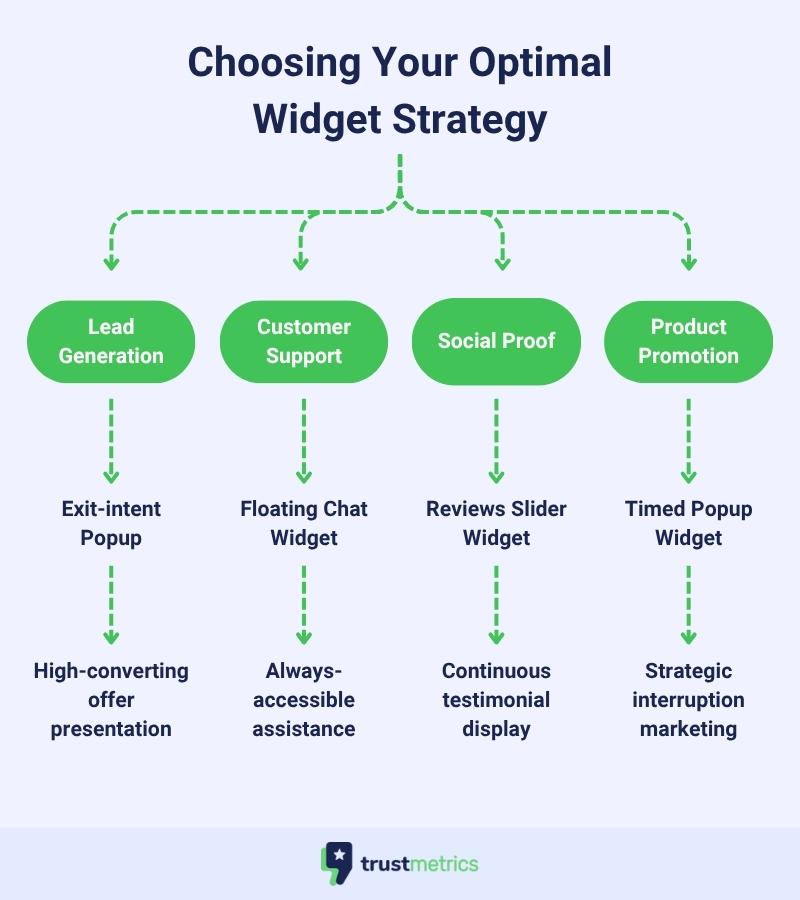
Performance Optimization and A/B Testing
Successful widget implementation requires continuous optimization through systematic testing methodologies. A/B testing different website widget styles provides data-driven insights into user preferences and conversion impact. Testing variables include positioning, timing, design elements, messaging, and trigger mechanisms.
Performance monitoring encompasses both quantitative metrics (conversion rates, engagement time, bounce rates) and qualitative feedback (user surveys, heat mapping, session recordings). This comprehensive approach ensures widget implementations deliver measurable business value while maintaining positive user experiences.
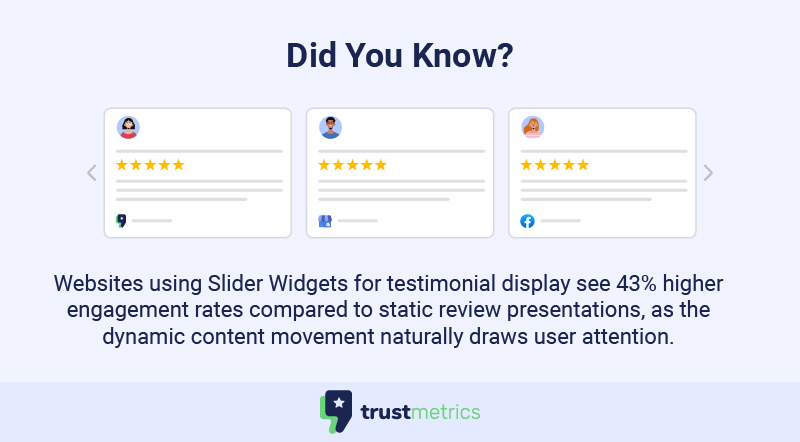
Integration with Comprehensive Digital Strategies
Modern widget strategies must integrate seamlessly with broader digital marketing initiatives including content marketing, social media engagement, and customer relationship management systems. Platforms like Trustmetrics demonstrate this integration by connecting review collection, display optimization, and conversion tracking within unified dashboards.
The future of widget technology involves artificial intelligence integration, predictive behavioral targeting, and personalized content delivery. These advanced capabilities will enable even more precise audience targeting while maintaining the user experience standards that define successful widget implementations.
Measuring Success and Iterative Improvement
Establishing key performance indicators specific to widget performance enables objective evaluation of implementation success. Metrics should encompass conversion attribution, user experience impact, and long-term customer relationship effects. Regular performance reviews and optimization cycles ensure widget strategies remain effective as user behaviors and technological capabilities evolve.
Conclusion
The choice between floating and popup widgets represents more than a design preference—it’s a strategic decision that influences user experience, conversion optimization, and brand perception. By understanding the technical capabilities, user psychology principles, and implementation best practices outlined in this comprehensive guide, businesses can leverage widget technology to create meaningful competitive advantages.
Success in widget implementation requires balancing assertive conversion tactics with respectful user experience design. Whether implementing Trustmetrics Reviews Widgets, Video Testimonial Widgets, or advanced Slider Widget configurations, the key lies in strategic alignment with broader business objectives and user journey optimization.
The digital landscape continues evolving, but the fundamental principles of effective widget strategy remain constant: understand your audience, respect user experience, leverage data-driven optimization, and maintain consistent performance monitoring. These foundations ensure widget implementations deliver sustained value while adapting to changing technological and behavioral trends.
Start your 7-day Free Trial
What are you waiting for? Sign up for a free 7-day trial of trustmetrics.io today!
- 7 day-free trial
- Cancel Anytime

